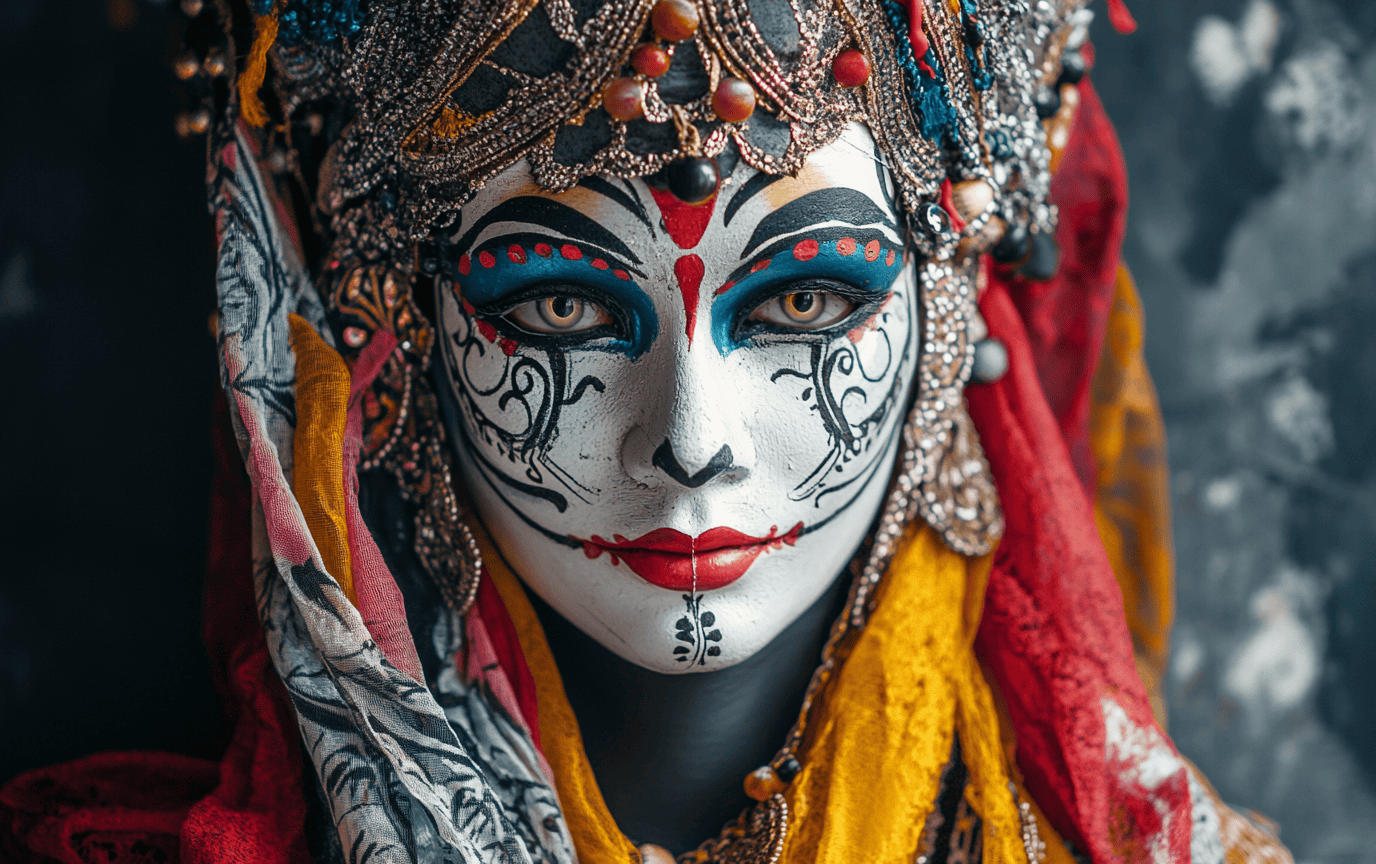Have you ever been to a festival where masks twinkled under the golden sun, and music twirled like whispered secrets through crowded streets? Those enchanting moments encapsulate the deep-rooted cultural significance of masks and costumes – artifacts that have echoed our history, revealed our identities, and transformed our very selves across the shifting sands of time. In the dance of life, masks have played roles as diverse as the cultures that create them. This article invites you on a journey to explore how these intricate creations blend personal stories, social reflections, and artistic expressions that still resonate today, much like the rhythm of ocean waves shaping a shoreline.
The Historical Roots of Masking Traditions
To understand masks, we must wander back in time—over 9,000 years, to be precise. Imagine the sun setting over dusty earth, as ancient peoples donned crude animal hides and painted faces, transforming into phantoms of the wild. Their masks weren’t just for show; they were sacred, enabling the living to commune with spirits, ancestors, and the cosmos itself.
Take, for instance, the first known mask, discovered in the hushed hills of Hebron. Crafted an eternity ago, it speaks of rituals that honored the bond between the dead and the living. “We are all but shadows,” one might muse, invoking the belief that our identities are shaped by the echoes of our forebears. In Egypt, masks adorned mummies, guiding the deceased through the murky labyrinth of the afterlife—an elegant reminder that masks can be bridges, leading individuals to another realm.
But the journey doesn’t stop there. Cultures across oceans, from the jungles of Africa to the temples of Japan, have woven masks deep into the fabric of their identities. Each culture adds layers to the tale; Yoruba masquerades embody ancestral spirits, while Noh theatre’s masks allow performers to channel emotions, revealing that masks can contain both history and art within their painted faces.
Ritual, Ceremony, and Performance
Masks thrive in the world of rituals and ceremonies, acting like portals to ancient realms. When I attended a Yoruba masquerade in Nigeria, the air was electric with anticipation. Dancers adorned in elaborate colorful costumes and masks emerged, each movement pulsating with the living spirit of their ancestors. There’s something transformative about such events; they weave the past into the present, forming a tapestry rich with meaning.
In Japan’s Noh theatre, the understated elegance of the masks conveys emotions words could never capture—longing, despair, joy. As the actors glide across the stage, the audience leans in, fully drawn into the world of symbolic storytelling. It’s fascinating how masks, crafted from the thoughtful hands of artisans, tell tales deeper than simple aesthetics.
And let’s not forget about the irrepressible spirit of Carnivals worldwide! These festivities allow everyday folk to cast off their societal roles and embrace anonymity. Whether at Venice’s Carnival or Mardi Gras, masks become symbols of liberation, letting people dance through life in a glorious blur of colors. During my first Mardi Gras, I donned a mask, and instantaneously felt the world shift. Suddenly, I was anonymous yet connected to every soul around, united in the wild revelry of anonymity. That’s what masks do—they allow us to explore our identities and find beauty in disguise.
Food and Wine: Celebrating with Culture
While masks and costumes lead the dance, let’s tip the hat to the delightful realm of food and wine—another essential cultural element that often accompanies festive celebrations. Picture this: a vibrant market bustling with laughter, spices wafting through the air, and the sound of clinking glasses resonating like a sweet melody. Each culture offers a unique feast that tells its own story.
At the Venice Carnival, I savored traditional regional delicacies like cicchetti, tiny plates of deliciousness, served alongside a crisp glass of prosecco. The spirit of celebration filled the air, revealing how food and culture are interwoven like the threads of a tapestry. Each bite not only tantalizes the palate but connects to deeper cultural practices and regional identities that are just as significant as the costumes we wear.
And oh, the wines! From robust Chiantis to delicate Rieslings, every sip tells a narrative, rooted in the soil of the land where grapes are nurtured. Sipping wine while adorned in masks at a lively festival transformed each taste into an experience to treasure—a fleeting moment that lingered in memory long after the laughter faded.
Let us not forget how communal dining experiences during these celebrations remind us of the power of connection—a monumental idea that transcends borders. As the saying goes, “People who love to eat are always the best people,” and as we gather around table after table during these joyful moments, we revel in our shared humanity.
Lifehacks, Scenic Landscapes, and Tips for Travelers
As we embrace the beauty of travel, let’s sprinkle some life hacks into our adventures for an even smoother journey. When wearing a mask at any festival, practice wearing it before the big day—your face will thank you for leaving room to actually breathe! I once fumbled through a late-night celebration, realizing I had misjudged the fit. Let’s just say, my fumbling got a few laughs, and I learned my lesson.
Always ensure your camera is charged and your smartphone has enough space for those magical picturesque landscapes that accompany any journey. Think soaring mountains bathed in golden sunlight, vibrant street art against crumbling walls, and serene lakes mirroring the cosmos. Capture the essence of your adventures, and let those moments inspire you long after you return home.
And as you explore beautiful destinations adorned with masks and costumes, embrace the local cultures fully. Engage with artisans, taste their culinary delights, and dance alongside them in festivals. Every experience becomes richer when you absorb the stories woven into the very fabric of the place you visit.
Lastly, don’t forget to keep an open heart and a curious mind. Being present allows you to experience those “aha” moments that remind you how small we are in this vast world, and—much like masks—how many layers make up our identities.
Conclusion
The deeply woven narratives of masks and costumes remind us that they are more than mere decorations; they embody the interplay of identity, culture, and community that define our shared human experience. As you travel and discover, whether through the allure of mystery in a mask or the exquisite flavors of a local dish—embrace the labyrinth of cultural expressions that surround us.
Interested in more insightful reads? Check out our Travel Tips section for the latest advice. For lifestyle inspiration, explore our Lifestyle category, and dive into amazing destinations at Destinations. Don’t forget to connect with us on YouTube, or follow our adventures on Instagram and Pinterest.
In your adventures, may you find the light in every mask, taste the love in every meal, and cherish the scenic beauty that unfolds before you. Happy travels, friends!













